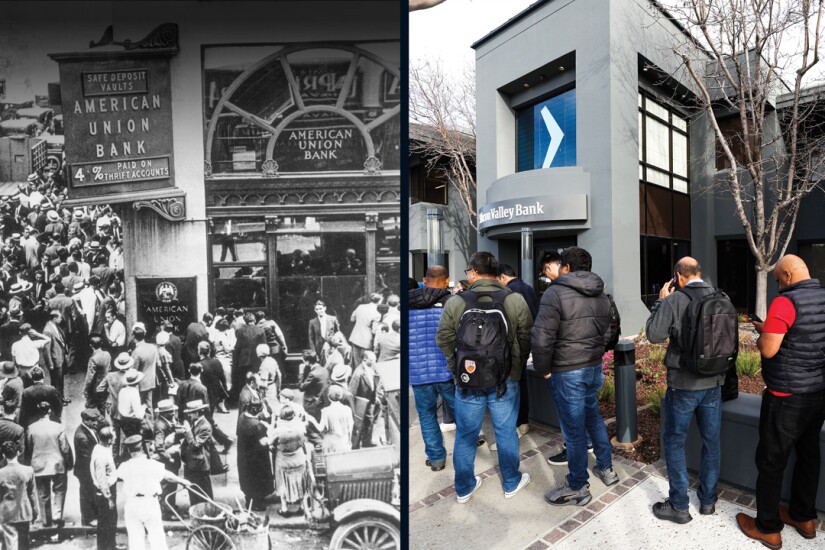
One of the irrefutable laws of physics is that for every reaction, there is an equal and opposite reaction. That same principle could easily be applied to the banking sector. Every time there is a blip, a crisis, a string of failures, key stakeholders rush to analyze, pick apart, determine what happened and why and how to contain the damage.
Take this story's artwork. It features a picture of depositors crowded outside the American Union Bank in New York after the institution failed on June 30, 1931. During the Great Depression, roughly 9,000 banks failed. In response, the Federal Deposit Insurance Corp. was created and deposit insurance has been offered since 1934 to shore up Americans' trust in the banking system.
That image is juxtapositioned against a picture of depositors lined up outside of Silicon Valley Bank a few days after the Santa Clara, California-based bank failed. A second large regional, Signature Bank, was also taken over by regulators in March. That was followed by First Republic's collapse in early May.
The industry is just starting to grapple with the fallout from this most recent crisis, and executives should brace for far-reaching consequences. Given the events earlier this year, the American Banker staff has made 10 predictions about how the banking sector will be permanently altered.















